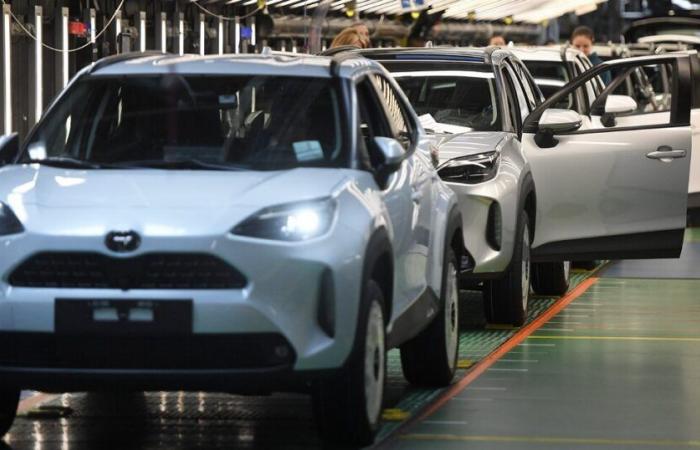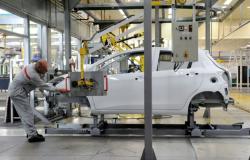
He could have gone to the Renault factory in Douai, 70 km away. But it is in Onnaing, near Valenciennes that Marc Ferracci, the Minister for Industry, decided to stop this November 26 to celebrate the 5 millionth Toyota Yaris coming off the lines of this Japanese unit in the north of the France.
A curious paradox? rather, an accounting pragmatism. The Toyota site today produces the most manufactured car in France (the Yaris) and, in 27 years of existence, Onnaing has become the factory which has produced the most cars throughout the country, the last year, with 274,000 Japanese city cars, and their Yaris Cross SUV variants. A figure which should be beaten this year to reach 280,000 units.
High-end and exceptional geographical location
Except that for almost three decades, Onnaing has been an economic mystery. When Renault, like Stellantis, explains all year long that their small cars cannot be manufactured in France, for a question of cost, and especially labor cost, Toyota demonstrates the opposite.
While the Clio 5s are Turkish, the 208s are Slovak and Moroccan, and the next electric Twingo will obviously be assembled in Slovenia, the two French auto bosses, Carlos Tavares and Luca de Meo, explain that repatriating manufacturing of their small cars in France would explode the fare meters. Either. But would Valenciennes be protected by an economic microclimate or would the remuneration of Valenciennes' 5,000 employees be lower than in the rest of France?
Of course not. The explanation is elsewhere. A few years ago, Didier Leroy, at the time boss of the site and today chairman of the board of directors of Toyota Motor Europe, gave us two reasons for setting up this factory in France: “cheap electricity and geographical location”. If French energy has increased significantly, and has caught up with European prices, the exceptional situation in Onnaing remains the same.
Because the factory is one of the best served in France by road and waterways. The connection, via the Seine Nord canal, already ensures transport to the south of France and will soon serve the entire Benelux, which the motorways to Belgium and Holland already do, but also to Germany and Great Britain. Brittany via the Channel Tunnel.
But this perfect location is complemented by a winning industrial strategy. For several years, the Yaris and its Cross friend have existed mainly with a hybrid engine. This focus on a single engine made by the entire brand simplifies assembly, even if a negligible quantity of 100% thermal Yaris of 70 hp persists.
In addition, and until today, its 87 g exempts it from penalty. Except that 24,450 euros for a city car is expensive. And at this price, it is not easy to sell. Toyota succeeds, however, thanks to its unparalleled experience in hybridization, and a reputation for reliability maintained for years. Result: when the 145 hp Renault e-tech hybrid represents a third of total sales of the diamond city car, Toyota sells 82% of its Yaris as a hybrid. In the end, the margins are affected, higher for the Japanese, and, ultimately, they make it possible to pay French salaries. The Japanese brand also dominates French manufacturers throughout Europe. The minister, on the sidelines of his trip to Valenciennes, explained in vain that “our industrialists can win in global competition, if we allow them to play on equal terms”, these weapons are more or less sharpened from one manufacturer to another.
Where will the small electric Toyota be assembled?
But Toyota's martingale in Onnaing may not be eternal. What will happen as the 2035 deadline approaches and its obligation to produce only 100% electric in Europe? Suspense. Especially since Toyota announces its first small electric, the BZ1, after the larger SUV BZ4X. This city car is due to be presented next year, but the brand suggests that it should be manufactured in the United Kingdom, Turkey or the Czech Republic. But not in Onnaing, although, as for the Yaris, Europe is its first market. An exceptional geographical location does not save everything.





